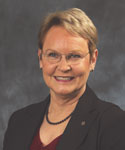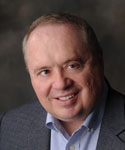 For the first time, five generations are currently employed in the workforce. (Editor’s note: The exact years of demarcation vary slightly by source, and there is certainly some overlap.) In research and clinical practice, rheumatologists need to be able to communicate with colleagues despite any generational difference or misunderstandings that may exist. It’s important to realize that each generation has its own unique characteristics and ways of communicating with one another, and with both the older and younger generations.
For the first time, five generations are currently employed in the workforce. (Editor’s note: The exact years of demarcation vary slightly by source, and there is certainly some overlap.) In research and clinical practice, rheumatologists need to be able to communicate with colleagues despite any generational difference or misunderstandings that may exist. It’s important to realize that each generation has its own unique characteristics and ways of communicating with one another, and with both the older and younger generations.
Traditionalists
Also known as the silent generation, traditionalists are individuals who were born before 1946. They generally keep their thoughts to themselves and only speak when spoken to. Therefore, a one-on-one communication approach works well with this generation, says Billie Blair, PhD, president/CEO, Change Strategists Inc. in Los Angeles.
As a group, traditionalists prefer more formal communication. “Give them your undivided attention. Use eye contact and listen closely,” says Thomas J. Walter, a human resource management consultant based in Elk Grove Village, Ill., and co-author of It’s My Company Too!: How Entangled Companies Move Beyond Employee Engagement for Remarkable Results.
This generation believes in following rules and respects structure and authority. “Many of these individuals have worked for the same practice for years,” notes Kate Zabriskie, president, Business Training Works Inc., Port Tobacco, Md.
Boomers
The baby boomer generation, which was born between 1946 and 1964, has experienced many changes during their careers. “These changes have made them quite flexible in their thinking, which is what they expect of those they converse with,” Mr. Walter says. “If an issue at your practice needs to be resolved, don’t just present one solution; have three. Boomers like to see flexibility in your thinking and want details to show that you have thought everything through.”
Boomers can be outspoken, but they typically wait to be invited to give their opinions—unless they’re extremely concerned about a situation, Dr. Blair says. Then, they tend to jump in with both feet.
Like traditionalists, boomers prefer face-to-face conversations and to be shown how to do things. “If time is limited for an in-person discussion, consider video tutorials for this ‘show me’ generation,” Mr. Walter says.
Generation X
Members of generation X are somewhat more adept with technology than their predecessors. This generation is juggling many things in their current stage of life, so e-mail works well for them as a communication tool, Mr. Walter says. Time may not always allow for face-to-face conversations.




